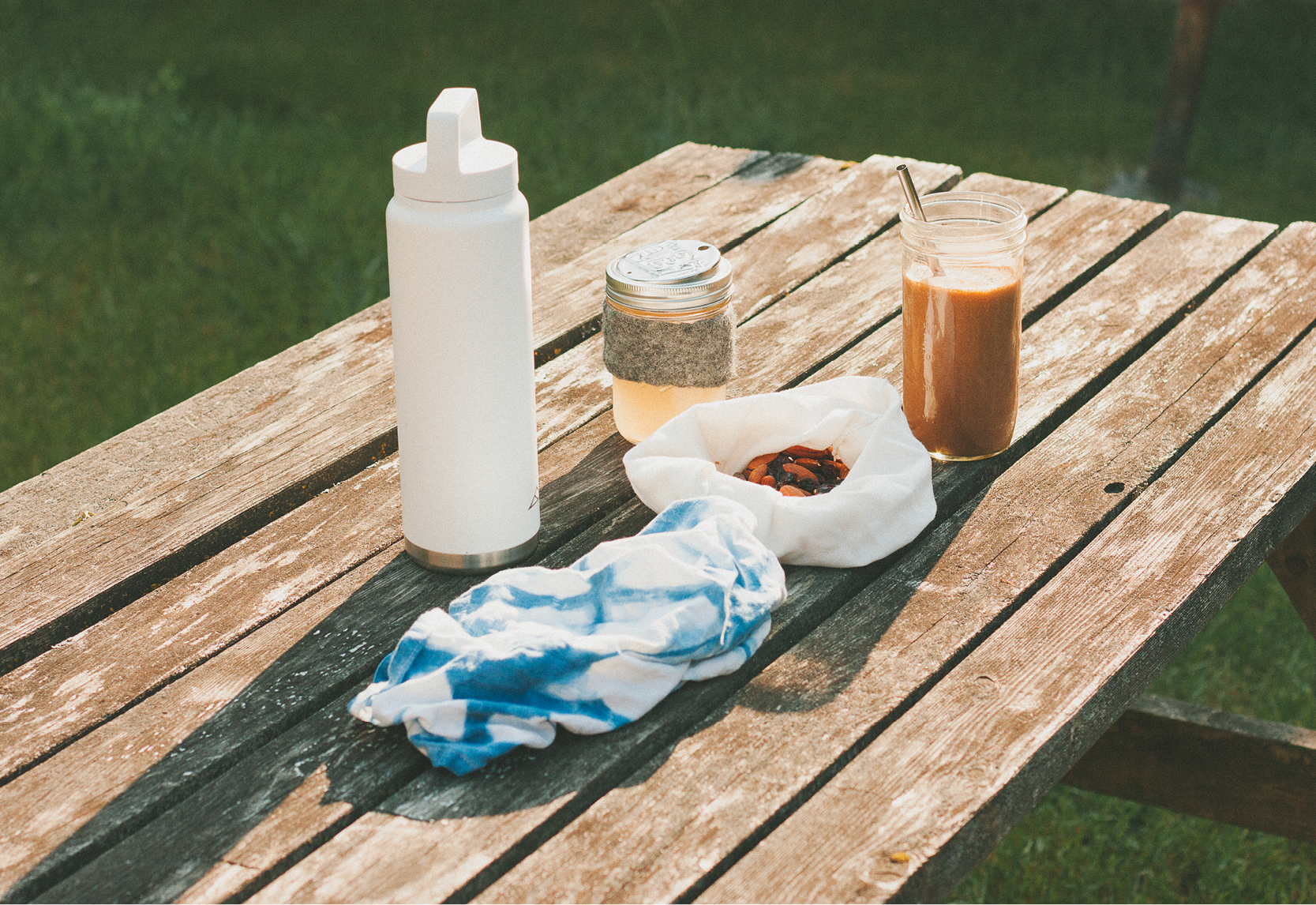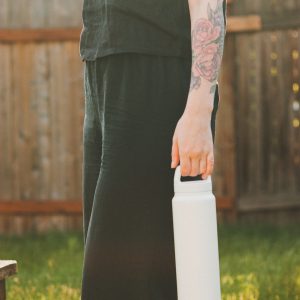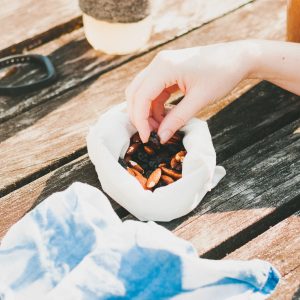The ultimate goal of the Zero Waste movement is transitioning from a linear economy, which is based on the “take, make and dispose” model of production, to a circular economy that relies on the 5Rs principles of Refuse, Reduce, Reuse, Recycle and Rot/Compost. It’s essential for governments and corporations to address this issue, but individuals also have the power to make an impact on their communities and environments by advocating for sustainable practices or simply leading by example. Here are five concrete and easy ways to lower the amount of physical waste we produce on a daily basis.
1. BYOC
Coffee cups are not recyclable and millions end up in the landfill daily. One very simple way to prevent this is to bring your own cup (BYOC)! There are enough options out there for you to find the right fit. From a mason jar with a drink top to an insulated stainless-steel mug, choose one that best corresponds to your lifestyle. The best reusable mug is the one you won’t forget to take with you.
2. Ditch the Straw
More and more businesses are banning straws entirely, which is awesome, but in the meantime, make a point of ordering your drinks “for here with no straw.” You can go one step further and share your motivations with the bartender. It might inspire them to ask their next customer if they’d like a straw or not before automatically putting one in a drink.
3. Never Buy Another Plastic Water Bottle
Did you know bottled water is at least 600 times more expensive than tap water? Talk about an easy way to save money! Get yourself a safe, reusable water bottle, keep it in your car, bag or backpack, and never buy another plastic bottle. If you need more reasons to stop buying water, remember plastic bottles are not only wasteful, but treated with chemicals that can leach into your water. So unless you find yourself in a place where tap water isn’t safe or not available, stop wasting your health and money on something that’s almost free.
4. Carry a Hankie
Any medium-sized piece of fabric, such as a bandana, cloth napkin or an old-fashioned handkerchief can be used as a regular napkin at restaurants, to wrap a to-go bagel, to wipe your nose or clean up a wound, and prevents the use of single-use napkins.
5. Give Bulk a Chance
Whether it’s at the farmers market, your neighborhood co-op or a big supermarket, there’s a reasonable chance you can buy something package-free, from vegetables and dry goods to spices. Start with just one item and bring your own container, a glass jar or a produce bag, weigh it, fill it up and voilà! No longer will you pay for packaging you’ll throw away as soon as you’re home.
Chloé Lepeltier is a translator, the author of the sustainable lifestyle blog Conscious by Chloé and the founder of Zero Waste PDX, a Portland-based organization that gives locals the resources and tools to reduce their carbon-footprint.
Images by Octave Zangs and Chloé Lepeltier.
xx Chloé Lepeltier
This article was originally published in RANGE Magazine Issue Nine.




